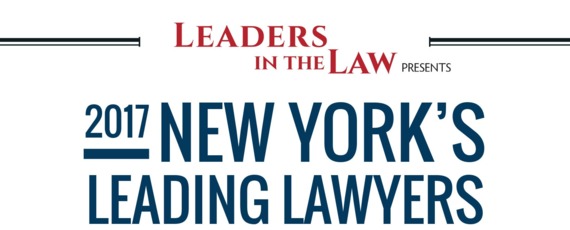Defective products, including medications and medical devices, can cause serious injuries. For over half a century, the personal injury attorneys at Friedman, Levy, Goldfarb & Green have been representing those who have been harmed by defective products, holding at-fault parties responsible for pain, suffering, lost wages, and other losses.
Call now for a FREE consultation!
Who are the parties in a product liability lawsuit?

A plaintiff needs to have standing to file a lawsuit – he or she must have suffered harm because of the alleged wrong. In a product liability case, the plaintiff can be a user or a bystander who has been injured, or a close family member who has been harmed financially or emotionally because of their loved one’s injury.
Defendants in these cases are generally manufacturers and sellers including retailers, wholesalers, and distributors. Sorting out who in the chain of commerce may be liable for an injury, and who may recover as a result, can be daunting task for even a veteran attorney. But the the legal team at Friedman Levy know exactly how to find the responsible parties and get them to pay.
Types of defective product claims in New York
New York recognizes three different legal theories as grounds for bringing a product liability action.
Negligence
The defendant did not exercise “reasonable care” or, in some cases, an expert standard of care. If the designer or manufacturer unreasonably failed to take into account advances in science and technology, they be found negligent. Other examples of negligence include fault with product design, insufficient testing, failure to provide clear instructions for use, failure to warn or issue a recall when public safety threat has been established.
Strict Liability
A vendor or manufacturer may be liable if it can be shown that the product was not suitable for its intended use or its risk outweighs its value. Strict liability does not require a finding of fault, so the plaintiff can recover without proving that the defendant knew or should have known that the product was defective.
Breach of Warranty
A manufacturer can be liable for a product’s failure to fulfill a claim. The claim can be express – stated explicitly – or implied. There is an implied warranty that, when used properly, a product will not cause injury.
Types of product defects
Plaintiffs may recover damages for injuries resulting from essentially three types of product defects. Your attorney will have to show that that one or more these defects was the cause of the injuries associated with using the product.
Defective design
The product is not reasonably safe even though it was feasible to design the product in a safe manner. If the design is defective, all of the products manufactured to that design will pose the same harm.
Defective manufacturing
The product did not perform as intended due to a manufacturing flaw. The product at the center of litigation may be found defective as compared with other products of the same design that did not cause harm.
Talk with an experienced personal injury attorney for a free consultation!
Defective failure to warn
Sometimes a product is properly designed and properly manufactured but still has some dangers that consumers need to know about. An injured party may have a claim if the defendant failed to warn about a danger that is not obvious, even if it arises from an unintended but reasonably foreseeable use.
Dangerous Drug and Defective Medical Devices
Pharmaceutical companies and medical device manufacturers benefit greatly from the health issues and medical needs of the public. The advances in technology are coming along at such an staggering rate, with profit margins so wide, the manufacturers show no sign of halting what is truly a lot of great progress. Though these companies are still responsible for testing their drugs and devices, an FDA loop-hole concerning “substantially similar” products has accelerated the testing process, allowing some of them into the market perhaps prematurely. Off-label and fraudulent marketing including claims of kickbacks are other theories of recovery that propel much of the litigation against these defendants.
Many of the world’s largest drug and medical device companies are currently facing a very specific kind of products liability litigation with thousands of plaintiffs organized into multidistrict litigation and class action lawsuits that seek to recover damages for the individual plaintiffs impacted by the same dangerous drugs and unsafe medical devices and implants.
Product liability statute of limitations in NY
Someone who believes they have been harmed by a defective product needs to act quickly because New York law limits how long they have to bring a claim.
In New York, the statute of limitations begins to run when someone knows or has reason to believe that they have been harmed by a product. From that point, they have three years to file a complaint unless some exclusion applies. This may seem like a long time but evidence can disappear and memories fade. It is important to take action as soon as practical.
Proving a product liability claim
Product liability lawsuits can involve highly technical information. A plaintiff may need to prove that a manufacturer or distributor did not act reasonably, but it can take a team of expert witnesses to articulate to a jury what is or was “reasonable” under the circumstances. Experienced product liability lawyers like the team at Friedman, Levy, Goldfarb & Green work with the most qualified industry experts to great effect.
Consult with a lawyer in Manhattan
If you were harmed by a poorly designed or improperly manufactured product or a dangerous drug, Friedman Levy can help you present your best case so you can receive full and fair compensation for your physical and economic losses. We recognize that fighting for victims is only the first step; holding manufacturers accountable helps protect the general public as well.
To discuss your case with one of our attorneys, call today for a free consultation.
Additional Product Liability Resources:
- Law Journal Newsletters, Duty to Warn and Third-Party Conduct: A Look at Two Recent New York Cases, https://www.lawjournalnewsletters.com/sites/lawjournalnewsletters/2016/11/01/duty-to-warn-and-third-party-conduct-a-look-at-two-recent-new-york-cases/?slreturn=20180520090103
- Findlaw, New York Statute of Limitations for Defective Products, https://statelaws.findlaw.com/new-york-law/new-york-statute-of-limitations-for-defective-products.html







